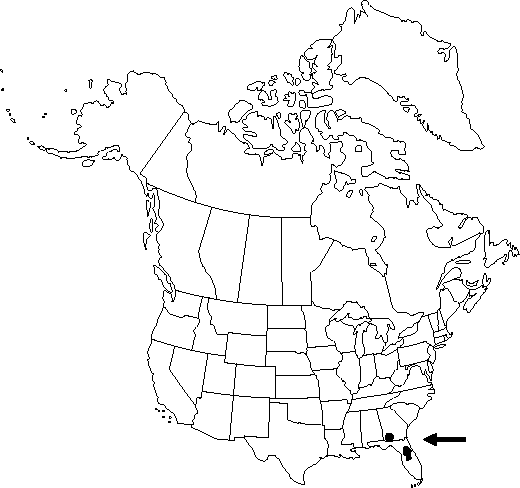Illicium parviflorum
Tabl. Règn. Vég. 3: 71. 1799.
Leaves: petiole 8-16 mm. Leaf blade dull green to olive, elliptic to obovate-elliptic, 5-13(-21) × 2-4(-6) cm, base acute, apex obtuse to rounded. Flowers 0.8-1.2 cm diam.; peduncle 0.7-2.4 cm; bracteoles 2-5; tepals 11-16, yellow-green, inner tepals orbiculate-obovate; stamens 6-7; pistils 11-14. Fruit aggregates 2-3.5 cm diam., usually with 10-13 pistils at maturity. Seeds hazel brown. 2n = 28.
Phenology: Flowering late spring.
Habitat: Moist woods, swamps
Elevation: 0-70 m
Discussion
Of conservation concern.
A. C. Smith (1947) placed Illicium parvifolium in Illicium sect. Cymbostemon (Spach) A. C. Smith. Illicium parviflorum is endemic to Lake, Marion, Orange, Polk, Seminole, and Volusia counties in Florida, and S. B. Jones and N. C. Coile (1988) reported the species as an escape in Thomas County, Georgia. Illicium parvifolium is cultivated in the southeastern United States and elsewhere; it has been frequently misidentified as I. anisatum Linnaeus, a taxon that differs from I. parviflorum in having larger, white tepals (M. A. Dirr 1986). The species may also be confused with the infrequently cultivated I. verum, which has fewer pistils (7-9[-10]) and more stamens (11-20).
Selected References
None.
